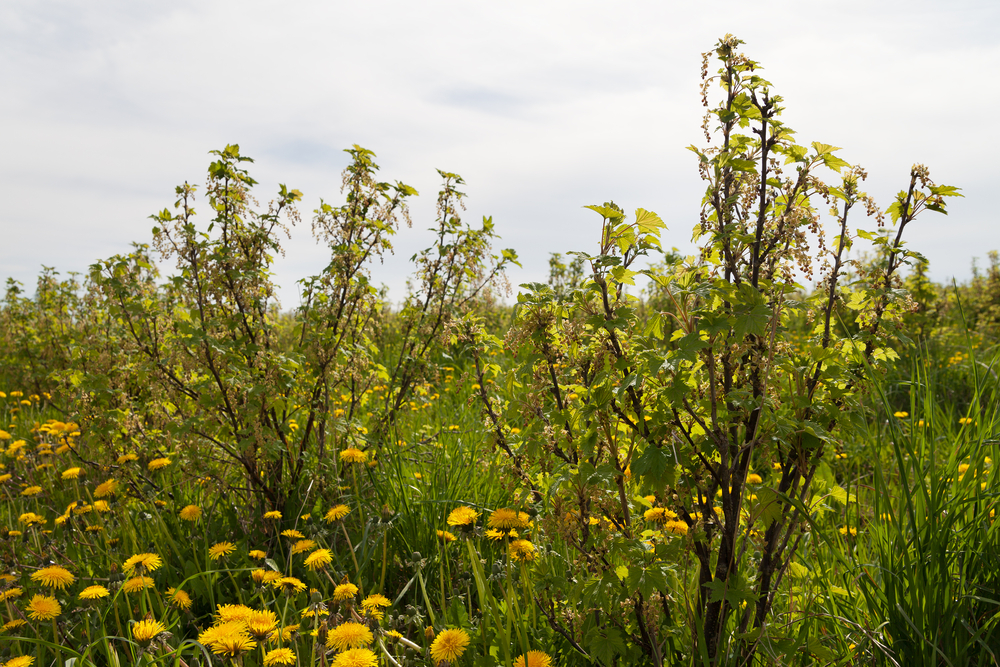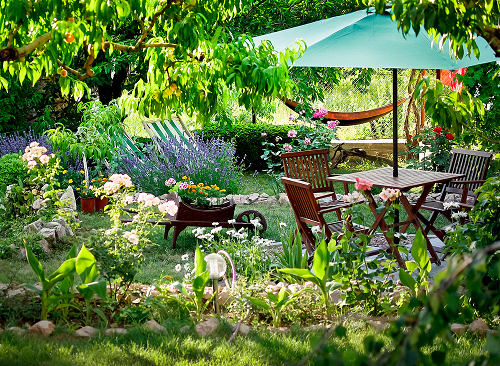Archive for Battle of the Brews
Tips To Keep Your Bushes Looking Their Best All Year
We can all agree that bushes are an essential part of any lawn. They make a great attraction and addition to places like walkways and fountains. You can also use them as the background of your lawn’s garden beds.
But for these small to medium-sized woody plants to keep looking their best all year, you need to take great care of them. The goal here is to ensure they add structure, texture and beauty to your landscape.
If you already have bushes or plan to plant them in your loan, there’s something here for you. We’ll cover the maintenance tips needed to keep the woody plants strong and healthy.

- Plant the Bushes at the Right Time
The lawn plants you choose to plant must be adaptable to your area’s climatic conditions and soil. Check the package for instructions and labels on the right growing conditions.
Fall is the best time to introduce new plants to your lawn. This allows the plant to get more time to adjust and grow before winter arrives. Also, during fall, the plant’s root system can easily establish before spring.
- Set a Watering Schedule
Your lawn plants will definitely need water to thrive and survive. You should therefore schedule watering at least once a week and do it thoroughly.
If watering the plants with a sprinkler, set the timer at least 10 minutes. Stop watering when the soil absorbs the water completely or when the lawn is soaked in water.
Water your new plants at planting time and intervals of 1 to 2 weeks daily after planting. You should also water them every 2 to 3 days once 3 to 12 weeks pass after planting. The plants will have more established roots after 12 weeks.
- Stick to Proper Feeding Habits
Instead of feeding your newly-planted bushes with fertilizers, mulch the soil with adequate compost. Mulching helps enrich the soil with essential micronutrients.
Later on, you can add fertilizers based on the nutrition requirements of the plants. For fragile plants, a layer of compost can help amplify the soil nutrients.
The most commonly used nutrients for the plants are potassium, phosphorus and nitrogen. Other essential nutrients include fairly large quantities of sulfur, magnesium and calcium.
- Prune at the Right Times
Pruning can only help maintain the shape and size of the plants if done regularly. You also need to employ different pruning tools for the task.
The best time for pruning the plants has to be spring. However, you have to figure out when the plant blooms. If its blooming season is spring, prune it when flowering stops.
And if it blooms in summer, consider trimming it in early spring or late winter before new growth forms. Either way, light summer pruning will work with a deciduous plant, while heavier pruning (in late winter) will be ideal for a dormant plant.
- Tie or Stalk the branches
Stalking the new bushes will work if they appear weak and it becomes difficult to straighten them. Give the plants some support until they develop a strong trunk. While doing this, ensure that the stalk has the same height as the plant.
You can also tie the stalk to the branches using heavy wrapped wire. But the cable needs to be shielded with a hose to protect the plant’s bark from grinding.
- Test the Soil
Soil testing will help you find out if the land has any deficiencies. If the test results suggest that there are deficiencies, address them using appropriate fertilizer. For instance, slow-release fertilizers will help you overcome nitrogen deficiency.
You can have your soil tested expertly if you send a sample to a soil lab in your area. Locally purchased soil test kits can also help you do this task.
- Watch out for Pests
Pests are undeniably a cause of concern in the maintenance of lawn plants. A lawn care professional can advise you on a suitable method to counter pest infestation on your lawn.
Examples of the most damaging lawn pests include Japanese beetles, masked chafers and white grubs. Others include caterpillars, mites and aphids.
- Mulching the Soil to Retain Moisture
Mulching is a great way to retain the warmth and moisture of the soil. The mulch can help your bushes take water from the soil during winter. It can be in the form of tree bark and wood chips if you lean more on the organic side and plastic paper for the inorganic options.
You can apply the mulches to the soil surface around your plants. This helps reduce soil erosion and control weeds. It also helps maximize the growth of your new bushes while cutting fertilizer costs.
The Takeaway
Implementing proper bush maintenance and gardening is the best way to keep your bushes and lawn looking healthy all year round. Good luck trying out these practices on your lawn.
And if you need professional lawn and landscaping help, we are always here to help you. Reach out today for a free estimate.
Small Backyard Ideas for a Magical Outdoor Space
Well-designed outdoor spaces can increase your enjoyment of your home. But what if you have a small backyard? Well, the good news is you don’t need a sprawling estate to transform your backyard into an outdoor oasis. Thoughtful landscape design can transform your small patio or yard into a refreshing outdoor space.
Transform Your Home with these Small Backyard Ideas

Whether you live in an apartment, townhouse loft, or a house with minimal outdoor space, you can carve out an outdoor space for yourself. Yes, even modest balconies and rooftop terraces count. Even a small yard can feel grand if you design it the right way.
Here are some small backyard ideas that can help you maximize the little space you have.
1. Create a Container Garden
You may not have the space or time to become a master gardener, but you can learn to create striking container gardens. When you lack good soil, containers allow you to make the ideal conditions for your plants to thrive.
All you need is a planter, some potting soil, and the plants of your choice. From hanging baskets to window boxes, you can embellish your backyard with bold foliage for a refreshing space your friends and family will love.
2. Think About Vertical Space
Vertical gardens, or living walls, are ideal features for small spaces. Think of the magnificent living tapestries that ornament public gardens and some buildings. You can bring the same beauty and vitality into your home using vine-covered trellises, closely planted fruit trees, and decorating your walls with hanging plants.
Reinvigorating your exterior with a living wall brings your backyard to life, attracting songbirds and pollinators, and can help temper the summer heat. Living walls also act as art, establish boundaries within a landscape, give you a sense of privacy, and obscure undesirable views.
3. Create a Focal Point
Focal points are used in landscape design to draw and direct the eye. If your backyard consists of a swath of plants or is crammed with furniture, your eyes will sweep along the area, not knowing where to land.
If your backyard is filled with plants and feels more like a garden, you can use a statue or a small fountain to detract some attention from the plants. You can also strategically place furniture to draw in the eyes. Conversely, if your space is adorned with furniture, you can use a large plant as a focal point.
4. Use Every Inch – Even the Side Yard
The side yard is often overlooked and can easily become a sad spot adorned with nothing but unsightly air-conditioning units. You can perk up your side yard by adding a stepping-stone path or install a welcoming entry gate if your space allows.
Another way is to draw the eyes up, away from the sides, using arbors, hanging vines, or strategic overhead lighting.
5. Embrace a Multi-Level Landscape Design
Breaking up your yard with steps, decks, retaining walls, or terraces can create the illusion of a larger backyard. A multi-level design helps to break things up visually, and you can help you separate the different functionalities of your yard.
You can have a dining patio on the upper level and incorporate different greenery into the lower levels.
6. Create a No-fuss Patio or Deck
Don’t have a green thumb? Not to worry. You can set up a murphy bar or an al fresco dining room on a bed of gravel, and voila! You added a little polish to your backyard. Add some statement chairs to create a laid-back or rustic atmosphere depending on the vibe you’re going for. And don’t forget to add some hanging lights to elevate the mood at night.
The idea here is to create a warm, welcoming space that doesn’t require you to get your hands dirty.
7. A Small Kitchen and Dining Area
Love to grill? You don’t necessarily need a large space for this. You can create an outdoor cooking center. All you need is a little space for a basic grill, counter, and a small dining area. You can even add to the ambiance by adding a fireplace or a small garden.
For your family, this could mean growing herbs in the garden, cooking dinner outdoors on the weekends, and enjoying evenings by the fire.
8. Maximize on Available Space
When you have a small backyard, it’s best to create a multifunctional space. You can invest in some portable furniture that you can keep in your basement or garage when not in use. Or, you can create seating benches that also double as storage spaces for lawn games and plants.
Better yet, you can build a mini storage shed that’s cute yet functional.
Revitalize Your Backyard
Looking for small backyard ideas that make a statement? DK Landscaping can help you create the backyard of your dreams. We are a full-service maintenance company with the tools and expertise to help you create a flourishing landscape.
Contact us today! The solution to your lawn and garden woes lies with us.





